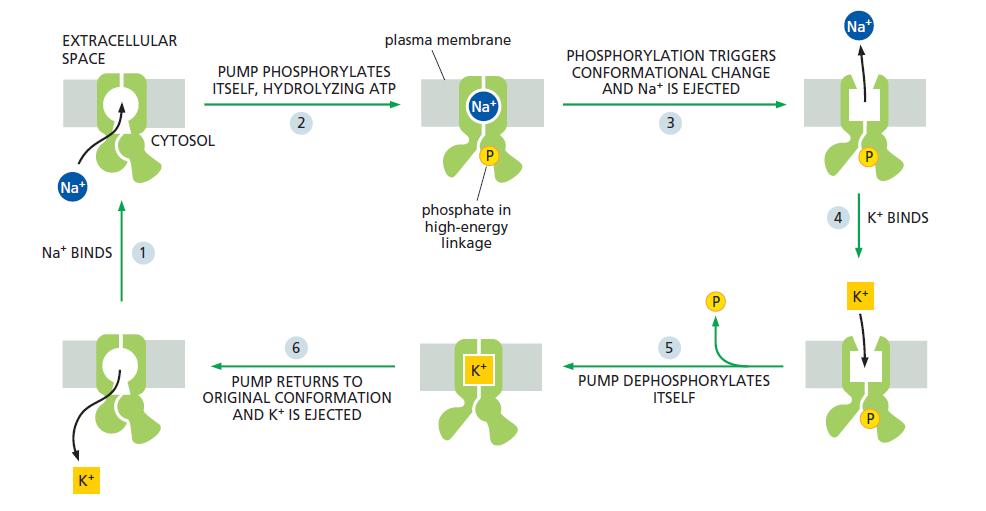Phospholipid bilayers form sealed, spherical vesicles in water. Assume you have constructed lipid vesicles that contain Na
Question:
Phospholipid bilayers form sealed, spherical vesicles in water. Assume you have constructed lipid vesicles that contain Na+ pumps as the sole membrane protein, and assume for the sake of simplicity that each pump transports one Na+ one way and one K+ the other way in each pumping cycle. All the Na+ pumps have the portion of the molecule that normally faces the cytosol oriented toward the outside of the vesicles. With the help of Figures 12–11 and 12–12, determine what would happen in each of the following cases.
A. Your vesicles were suspended in a solution containing both Na+ and K+ ions and had a solution with the same ionic composition inside them.
B. You add ATP to the suspension described in (A).
C. You add ATP, but the solution outside as well as inside the vesicles contains only Na+ ions and no K+ ions.
D. The concentrations of Na+ and K+ were as in (A), but half of the pump molecules embedded in the membrane ofeach vesicle were oriented the other way around, so that the normally cytosolic portions of these molecules faced the inside of the vesicles. You then add ATP to the suspension.
E. You add ATP to the suspension described in (A), but in addition to Na+ pumps, the membrane of your vesicles alsocontains K+ leak channels.
Figure 12–11
Figure 12.12
Step by Step Answer:

Essential Cell Biology
ISBN: 9780393680362
5th Edition
Authors: Bruce Alberts, Karen Hopkin, Alexander Johnson, David Morgan, Martin Raff, Keith Roberts, Peter Walter





